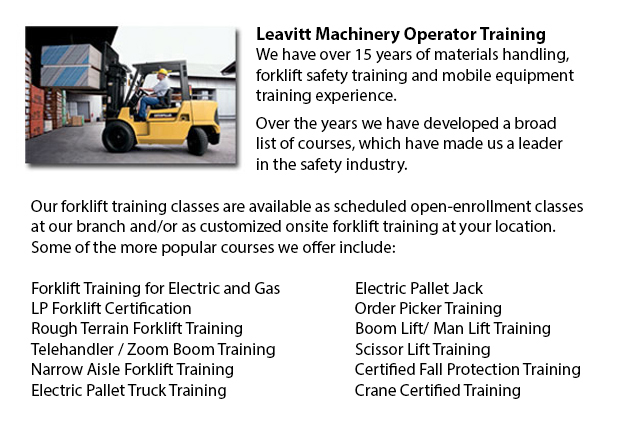
There are actually two classifications of lift trucks within the manufacturing business, the rough terrain model and the industrial version. Rough terrain forklifts appeared in the 1940â??s built predominantly for use on rough roads, best for lumberyards and construction sites, providing lifting muscle when there was no paved surface existing.
Rough ground lift trucks normally utilize an internal combustion engine with a battery for power. The engines can function on propane, diesel or gasoline. A number of manufacturers are experimenting with rough ground lift trucks that consume vegetable matter and run from ethanol. Substantial pneumatic tires with deep treads distinguish these forklifts to permit them to clutch onto the roughest soil type without any misstep or sliding.
A number of of the original designs of rough terrain forklifts had the capability to raise in excess of 1000 lbs, via forks that could run underneath the item, lift it slightly and move it to a different location. After ten years on the market, all terrain forklifts were reinforced with added carrying power, increasing the possible weight to more than 2000 lbs. Telescoping booms were added in the 1960â??s, allowing them to stack resources a good deal higher than in earlier years. The telescoping design characteristic is a staple of nearly all all terrain forklifts these days. Present versions are capable of managing well over 4000 lbs due to the continual improvements over time. Telescoping capability has additionally improved with some versions reaching a height of 35 feet. Operator safety has also become a focus with a lot of rough terrain lift trucks currently built are fitted with an enclosed cab for the driver, as opposed to the older open air seating capacity.
The rough terrain lift trucks available today work equally as well on covered floors as on unpaved surfaces. These all terrain forklifts are being marketed for their usefulness permitting companies to transport parts from outside the plant to the inside or vice versa.
-
Crown Forklift
More -
Aerial Lifts
Aerial platform lifts can be used to accomplish a lot of distinctive tasks done in hard to reach aerial spaces. A few of the tasks associated with this type of jack include performing regular repair on structures with lofty ceilings, repairing teleph... More -
Genie Forklift
Genie is a globally recognized company that enjoys the spirit of collaboration with their extensive network of associated clients. Genie Industries prides itself on the image of bringing materials and people higher and extending beyond the goods they... More -
Komatsu Forklift
Komatsu Forklift U.S.A. Inc. has an excellent reputation for building dependable and rugged forklifts. Komatsu is recognized around the globe as a corporation with a rich heritage while retaining an exceptional benchmark of modernization and quality... More -
Boom Trucks
Boom vehicle are often utilized by phone, cable television and utilities firms as they have long folded arms which are typically folded over the roofs of business vehicles. On the end of the extension of extendable arms usually sits a bucket-like app... More

Forklift Training Scottsdale
TOLL FREE: 1-888-254-6157
Scottsdale, Arizona
forkliftcertificationscottsdale.com
Email Us
About Us


